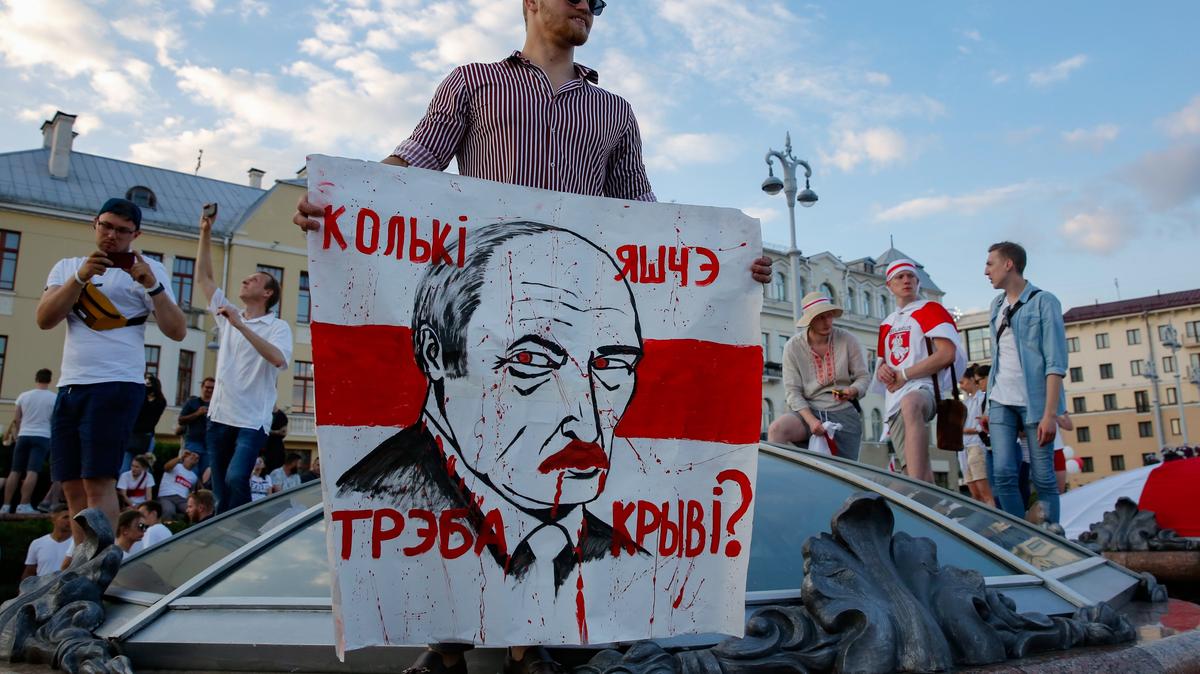Alexander Lukashenko and Vladimir Putin were on different tracks at the start of their dictatorial careers. You could even go so far as to say they were travelling in different directions at different speeds, yet they soon found themselves in the same lane. But it’s Lukashenko who hits a milestone today, having now been in power for exactly 30 years.
Six-year head start
The second round of the first and so far only free presidential election in Belarus took place on 10 July 1994. Some 80.34% percent of the electorate voted for Lukashenko, a collective farm director and a deputy in the Belarusian Supreme Soviet. He was not the first person in history to come to power in a protest vote, but in this case, the protest wasn’t so much for Lukashenko as against outgoing prime minister and communist veteran Vyacheslav Kebich. People voting for Lukashenko thought this would end the influence of the Communist Party and the Soviet-era elite, which hadn’t waned despite the 1991 signing of the Belovezha Accords, formalising the dissolution of the Soviet Union.
Lukashenko later liked to claim that he was the only deputy of that Supreme Soviet who voted against ratifying the accords, but that was just one lie amongst many — Lukashenko simply hadn’t been present for the vote.
Nobody knows whether Lukashenko had planned to become a dictator or whether nature took its course, but he made full use of the six-year head start he had over his Russian counterpart by shutting down the independent press, imprisoning journalists, dispersing protests, and eliminating political opponents with the help of a “death squad”. It was around this time he was first called “Europe’s last dictator”. In a 2020 interview, Lukashenko claimed it was US Secretary of State Madeleine Albright who coined the sobriquet, though in actual fact it was his domestic political opposition. Nevertheless, Lukashenko appears to relish the nickname, saying in the same interview, “When Putin and I meet, I say ‘Volodya, I’m no longer Europe’s last dictator’. And he says: ‘You don’t think I am, do you?’ And I say: ‘I’m not saying anything!’”.
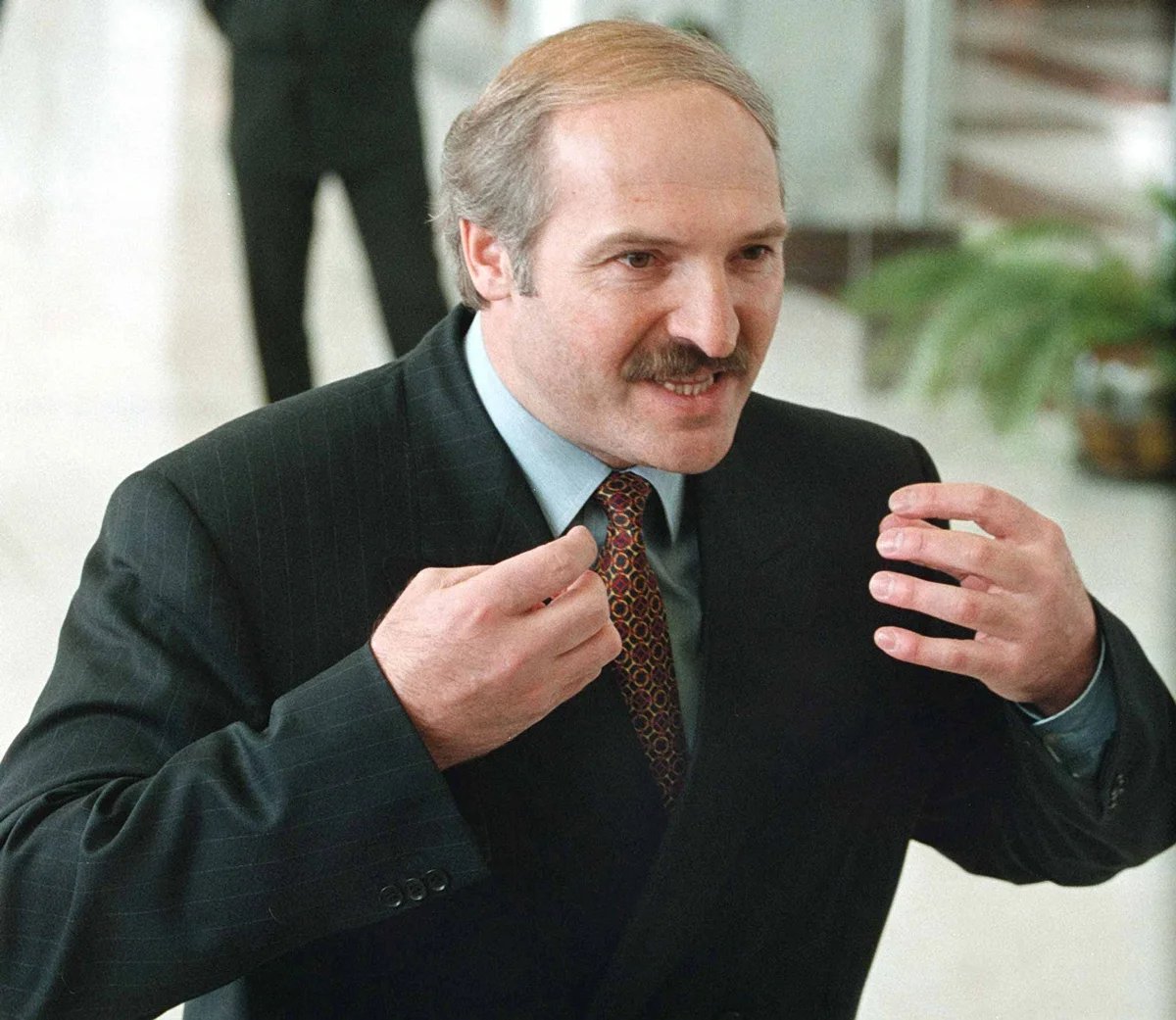
Alexander Lukashenko, 22 May 1997. Photo: Sergey Chirikov / EPA
Is a rogue state a free state?
Lukashenko and Putin are of the same generation — Putin was born in 1952, Lukashenko in 1954 — and they are surprisingly close in other regards too. However, whereas Lukashenko acts intuitively and emotionally, Putin tends to pay close attention to what his uncouth ally is doing and then chooses his own course of action in a far more sophisticated way.
Take resets, for example. Lukashenko has done two. In 1996, he held a referendum, complete with falsified results, to disband both the Belarusian Supreme Soviet and the Central Election Commission, and decided that the first two years of his presidency didn’t count, as 1996 marked the beginning of a new era. The second reset came in 2004, when he removed presidential term limits altogether. Lukashenko was therefore already an old hand while Putin was still learning the ropes. That said, it didn’t take him too long to catch up, and Lukashenko certainly didn’t possess the sheer audacity to replace himself with a stooge for four years to reset the presidential term counter to zero without violating the constitution, as Putin did with Dmitry Medvedev in 2008.
But Putin has without doubt learned some tricks from his opposite number in Minsk, such as how on election day in 2010, Lukashenko arrested the other candidates alongside hundreds of Belarusians who came out to protest, throwing them in prison on charges of “organising mass riots”, an obscure and previously unused law. A year and a half later, after huge demonstrations on Moscow’s Bolotnaya Square on the eve of Putin’s inauguration for his third term as president, the Russian authorities used similar previously unused charges to crack down on protesters, Belarus style.
But Russia was still a member of the Council of Europe at the time, and the accused were able to appeal to the ECHR. While this didn’t affect their sentences, Russia was fined for its behaviour, which, the court ruled, violated the constitutional rights to freedom of assembly and to a fair trial. Perhaps this is when being a rogue state with no international obligations began to appeal to Putin.
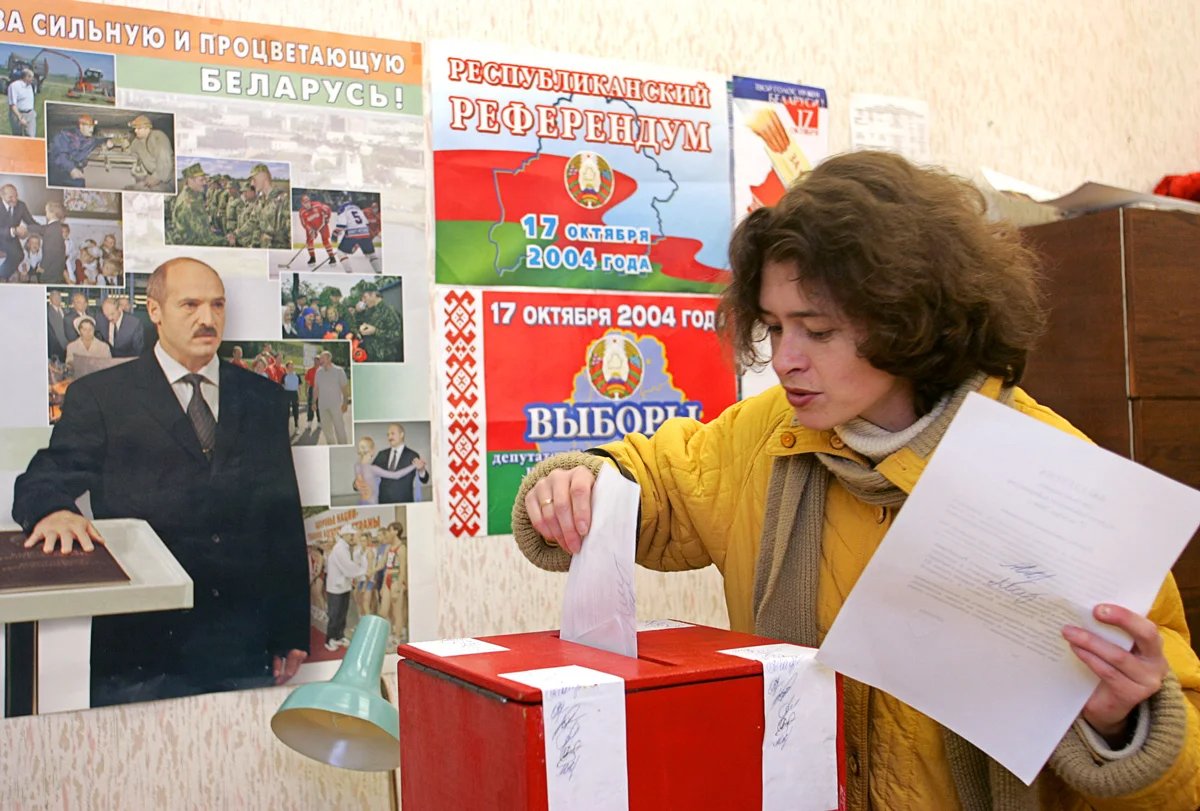
Voters take part in the 2004 referendum in Belarus. Photo: Gleb Garanich / Reuters / Scanpix / LETA
‘We fought Germany together’
At the start of his reign, Putin rather looked down on Lukashenko. By the early 2000s, Russia had become a member of the G8 and Putin clearly considered himself a cut above his Belarusian counterpart.
While nobody doubted Belarus’s strategic value for Russia in terms of its key geopolitical location, Lukashenko was something of a dilemma for Putin personally, who looked down on his ally with thinly veiled disgust. Belarus continued to receive Russian gas at domestic prices, but despite the creation of the Union State between the two governments, which integrated their two economies and defence policies, there was no guarantee of loyalty, and Putin was certainly making no promises of everlasting love and friendship.
By the early 2000s, Russia had become a member of the G8 and Putin clearly considered himself a cut above his Belarusian counterpart.
However, after Russia’s illegal 2014 annexation of Crimea and the start of its proxy war in eastern Ukraine, the country was excluded from the G8 and lost its voting rights in the Council of Europe (PACE), making Putin and Lukashenko effective equals on the international stage.
In March 2014, the European Council cancelled a planned EU-Russia summit, one in a series that had been used to discuss deeper Russia-EU integration, including a visa-free regime and a free trade agreement, and announced the suspension of bilateral summits with Russia until further notice.
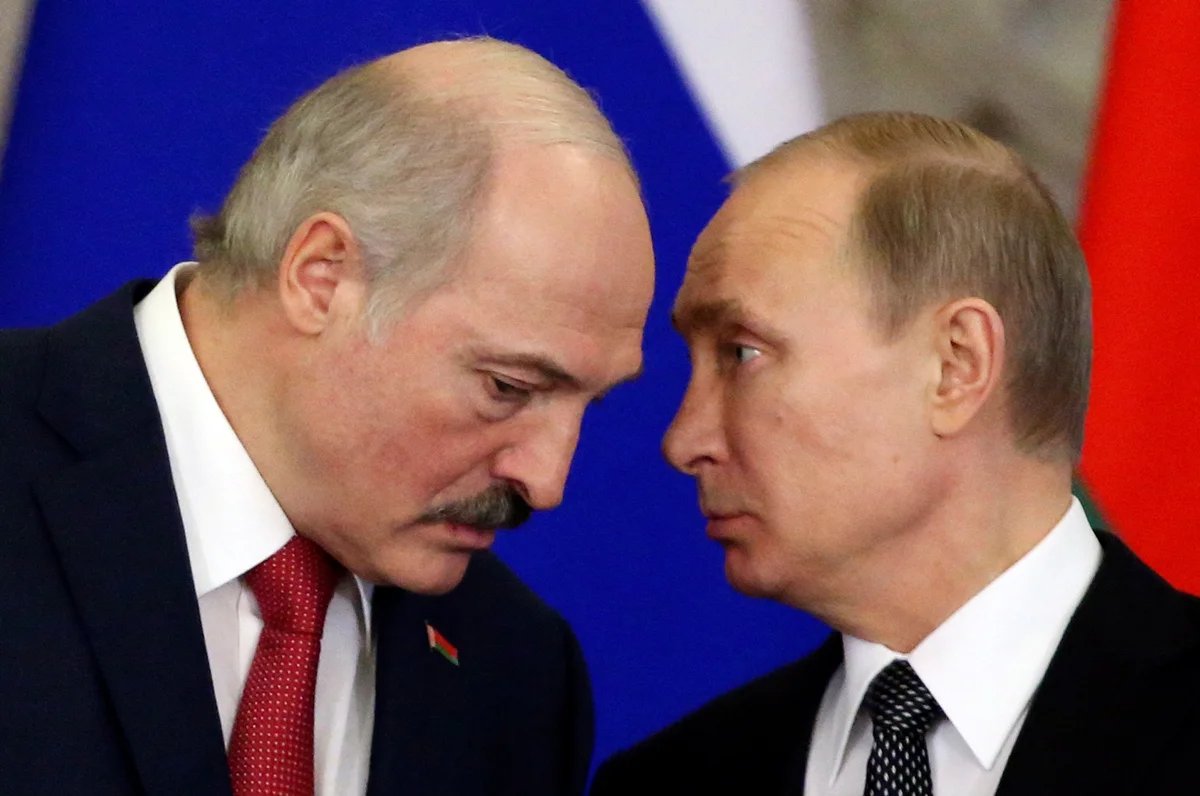
Putin and Lukashenko in the Kremlin, 3 March 2015. Photo: Sergey Karpukhin / Reuters / Scanpix / LETA
So began an era of European sanctions on Russia that simultaneously freed Putin from almost all of his international obligations, and meant that by the time he launched his full-scale invasion of Ukraine in 2022, he was already the ruler of a rogue state.
Between 2014 and 2022, the relationship between the two outcast leaders continued to evolve, with Putin continuing to assert his dominance over an increasingly self-confident Lukashenko. Nevertheless, their annual negotiations on the Russian oil and natural gas prices offered to Belarus was proof that Minsk remained heavily dependent on discounted Russian energy supplies. In 2018, Russia’s then-Prime Minister Dmitry Medvedev said that domestic gas prices for Belarus would be possible only with deeper Belarusian integration — in other words, the incorporation of Belarus into the Russian Federation.
Lukashenko would also go on the offensive from time to time, once even stressing that Russians — and especially the Russian leadership — should understand that Belarusians were not “errand boys”.
While usually avoiding making comments on Russia’s relations with Belarus, in 2018 Putin attributed the advantageous gas prices given to Minsk to the integration between the two countries, a comment that riled Lukashenko and prompted an emotional reaction in which he asked how such a situation had arisen, given the two nations had “fought Germany together”.
Lukashenko subsequently walked back his comments, explaining that he “spoke in such a bad way” that he had felt obliged to apologise to Putin, in what he said had been “a very frantic explanation”, adding, “It would have been best you didn’t hear it”. This overreaction followed by an apologetic plea for forgiveness could hardly have better illustrated who the boss was in the dynamic.
However, Lukashenko would also go on the offensive from time to time, saying that if Russians no longer viewed Belarus as a brotherly state, then Minsk could manage without them, once even stressing that Russians — and especially the Russian leadership — should understand that Belarusians were not “errand boys”.
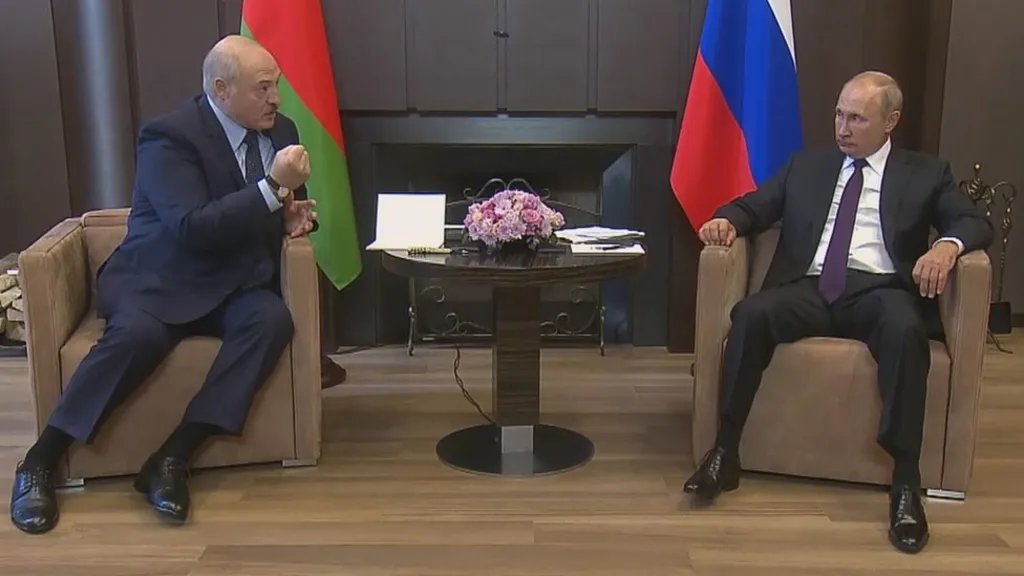
Putin and Lukashenko in Sochi, Russia, 14 September 2020. Photo: EPA
A sweet embrace
Lukashenko and Putin were fully reconciled by 2020. For years, Putin closely monitored what was happening in Belarus, and even adopted many of Lukashenko’s tactics with some adjustments. The protests against the blatantly stolen presidential elections in Belarus in August 2020 must have prompted Putin to consider what might happen if a similar situation were to occur in Russia. If half a million people, a quarter of Minsk’s population, took to the streets, what would happen if a quarter of Moscow’s 13-million-strong population followed suit?
There were no more references to errand boys, and the phrase “Putin and I” became part of the Lukashenko lexicon. On 16 August 2020, the day of the largest protest in Belarus, Putin assured him in a phone call that he would step in if protests began to threaten Lukashenko’s grip on power.
On 14 September, Lukashenko flew to meet Putin in Sochi and called the protests “a lesson learned by both Belarus and Russia”. The meeting provided fodder for numerous memes — Lukashenko was seen sitting with his whole body facing Putin, his hands clasped seemingly in prayer, while Putin sat with his legs spread wide, watching his guest with a stoic expression, and occasionally face-palming.
It is now clear that the Russian leadership was already preparing for a full-scale invasion of Ukraine in the autumn of 2020. At this stage in their relationship, Lukashenko and Putin stood shoulder to shoulder. During Lukashenko’s visit to Sochi, Putin arranged a €1.4-billion loan to help Belarus overcome “hard times”.
On 24 February, Lukashenko, looking as if he had been preparing for his speech all night, explained how he had personally asked Putin to keep some troops in Belarus after their most recent joint military exercises. “Putin agreed,” he said. “He told me, ‘You’re right, we should leave them there. It gives agitated politicians in Ukraine another chance to draw the right conclusions. Perhaps they’ll understand the need to sit down at the negotiating table and make decisions for peace. Brotherly nations should not go to war.’ This is what we agreed upon.”
Lukashenko has now been in power for 30 years, while Putin will celebrate his 25th year in power later this year. It’s basically their silver wedding anniversary. Regardless of their poses at the Sochi meeting, the applause from the sidelines, or the apologies exchanged, their relationship transcends conflict, Putin’s disdain, and Lukashenko’s animosity. Their familial bond has brought them together as a singular evil. Together, they are stronger, calmer. They are more confident together than apart. Above all, without Putin’s support, Lukashenko would not be celebrating his 30th anniversary as Europe’s last dictator today.
